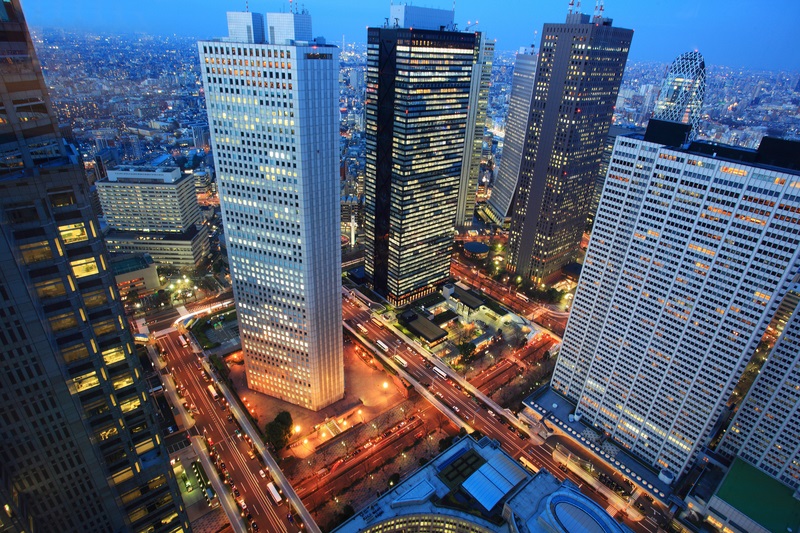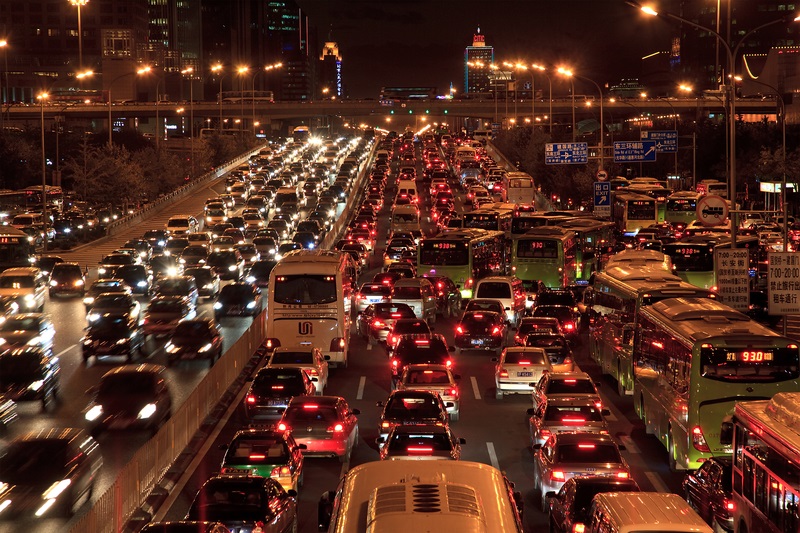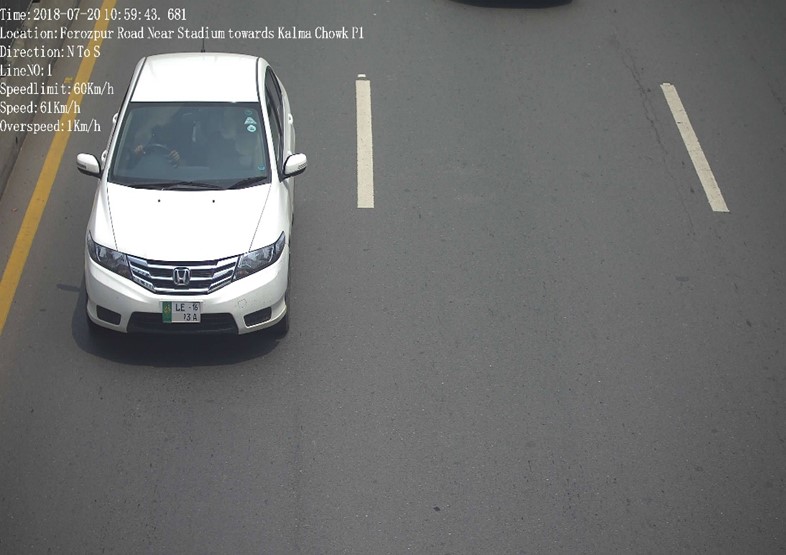
The United Nations is constantly highlighting the urbanisation of countries. This move - from rural living to city living - assumes that life will be better for those making it.
People come to cities to seek better lives, which has the positive impact of providing more people to work in new and expanding businesses.
One of the key measures of progress for many people making of the move is when they are able to purchase a car for the first time. The obvious extrapolation of this is that – as urbanisation increases exponentially – so vehicle ownership increases.
Cities in different parts of the world are at different stages of traffic development.
Those which have had motor vehicles for a long time also tend to have a very constraining layout that they have had to work with. These cities have often grown to a peak of traffic and are now levelling off.
Newer cities have the advantage of more modern layouts designed for large volumes of vehicles.
However, the challenges they both face are the same: managing capacity, enforcing traffic laws and being able to rapidly respond to incidents.
Positive indicator
The growth in traffic, while a positive indicator on a society, creates problems for city authorities. Many cities across the world have layouts that were planned decades - or even centuries - ago.
The rate of growth in vehicle use has exceeded the most optimistic planning assumptions of even a decade ago. This has led to congestion, which can start to inhibit city prosperity.
Therefore, governments and city authorities need to consider how to manage both the current volumes of road traffic and the (hopefully more accurately projected) growth in order to see continued economic improvement.

Highway engineering has existed as a discipline for a very long time, in terms of the building and configuration of roads. But as motor vehicles grew in popularity in the early 20th century, it was recognised that traffic needed to be controlled to avoid accidents and congestion.
This started with road signs specifically for vehicles and in 1868 the first traffic lights, albeit gas-powered. Since then, laws and controls have become increasingly complex.
City authorities have largely been responsible for the design of traffic management systems, including roads, signs, traffic lights and parking controls, while the enforcement of traffic laws has fallen to the police.
The volume of traffic in most cities has now reached a stage where monitoring, managing, understanding, and directing it has become a complex industry and the enforcing of traffic laws is beyond the capability of patrolling police officers.
As these problems have increased, technology has been developed to provide solutions. Unfortunately, these have evolved piecemeal, unconnected and focused on the individual issues.
However, companies have built on their experience of platforming complex ecosystems of processes into cloud environments and have developed better-connected and more comprehensive traffic management solutions.
Next-level AI
Huawei has now taken this to another level and included the latest Artificial Intelligence (AI) capabilities to ensure the maximum amount of precise, effort-reducing automation is available, freeing staff to undertake more value-adding work.
To understand the value of the fully-integrated and intelligent nature of these systems, we need to look at the needs any city will have for traffic management.
First, we require a general awareness of the traffic situation and to be able to communicate that to those who need to know. There are many cameras throughout a city, some (but not all) with views of traffic.

Many of these are the latest intelligent cameras, with on-board software analysis capability to do various functions, while others just give views.
It is important that those who need to make decisions on both day-to-day traffic behaviour and plans for the future are given the best information possible to assist them in their decision-making.
At an elementary level, this is about the volume of traffic on different days and how the make-up and volume vary through the day.
Historically this has been a very manual process, with physical counts, but now cameras can view and count traffic easily, influencing many decisions on other aspects of traffic management.
Comparing historic patterns to emerging patterns on any single day allows accurate predictions on congestion to be made and appropriate interventions taken.
Congestion can have many causes: the most obvious is simple excessive volume, but accidents can almost instantly start to cause jams on surrounding roads.
So, traffic flow analysis is one of the fastest ways of spotting accidents, if other capabilities in the traffic management system fail to pick them up.
Many countries monitor vehicle movements through number plate recognition technology, but as a standalone system. This is an expensive and complex platform to set up and data-sharing is a cumbersome process.
Integrating number plate recognition technology with all back-end databases allows identification of vehicles and, potentially, of drivers who may be of interest to authorities for the plethora of reasons permissible within different legislatures.
The advantage of a single-platform approach to traffic monitoring means that privacy by design can be demonstrated and proven.
Also, only permitting access to number plate details to those with a legitimate need to know can be easily managed and controlled.
Parking problems
One of the most basic of traffic laws concerns parking. It’s an offence that seems innocuous, but can lead to many problems if it is not dealt with and shown by city authorities as something that will not be tolerated.
Like traffic volume assessment, parking enforcement has traditionally been a very manual process.
However, video analysis technology can now be taught the geography of the road layout, including the areas where parking is permissible and where it is not.
AI algorithms in the software-defined cameras, or similar algorithms in the data centre, can understand the act of a vehicle moving into non-permitted areas and stopping moving, i.e. illegal parking.
Using the standard vehicle plate reading algorithm, parking tickets can be automatically assigned to a vehicle and either issued automatically to the offending driver, or sent to the registered owner to deal with.
The next most common and problematic traffic offence is perhaps speeding.

The huge innovation here is to move away from the two problematic approaches of rear-only cameras and cameras that flash drivers from the front. Both of these have limitations technically and in terms of driver safety.
The latest Huawei cameras are capable of working in all lighting conditions, accurately capturing vehicle details and then being able to interpret them for adding to the information from radar, to create an evidence file required to prosecute speeding to evidential legal standards.
Key to this is being able to prove both the calibration and the non-repudiation of the data. The cameras are also capable of often capturing the driver and simultaneously monitoring two lanes of traffic.
In addition to speeding, there are a tranche of traffic offences that we can look at using the latest video analysis and AI technologies. These include jumping red lights, illegal turns, crossing hazard lines (solid white lines) and not giving way to pedestrians on crossings.
All of these can be confirmed with consistent accuracy and the offending vehicle identified.
It takes a very short configuration process for the local road geometry to be taught to the system so that any transgression can be immediately identified.
Where legislation requires multiple images before, during and after the offence, this is easily activated within the platform.
In later articles, we will look at more ways in which city authorities and transportation agencies can be helped to intelligently manage traffic.
Please click here for more information on the above-mentioned solutions.
ABOUT THE AUTHOR:

Andrew Watson is global government industry expert with Huawei's Enterprise Business Group
Content produced in association with Huawei











